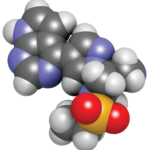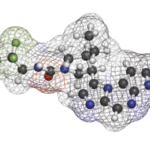Other Possibilities
Next, Dr. Kerschbaumer discussed the use of JAK inhibitors in other IMIDs. In SLE, JAK inhibitors have shown modest, but statistically significant, improvements in composite response indices, including the SLE Responder Index (i.e., SRI-4) and the British Isles Lupus Assessment Group-based Composite Lupus Assessment (BICLA), particularly for musculoskeletal and mucocutaneous manifestations.
Emerging evidence also supports the use of JAK inhibitors in autoinflammatory diseases and difficult-to-treat conditions, such as adult-onset Still’s disease and systemic juvenile idiopathic arthritis. However, most of these data are from small case series or observational studies. Larger clinical trials are still needed.2
Research End Points
Throughout his talk, Dr. Kerschbaumer stressed a key point: Readers of clinical research articles should pay close attention to the primary end points used in each study because they inform what clinicians can and should take away from any one article.
Some of the most commonly used end points in SLE clinical trials are the SLE Disease Activity Index 2000 (SLEDAI-2K), BICLA and SRI-4. SLEDAI-2K is notable for its simplicity, but has limitations, such as not capturing partial improvements or all organ manifestations. BICLA and SRI-4 are more sensitive to change and are frequently used as primary end points in clinical trials of new therapies, including those evaluating the effects of JAK inhibitors.5
Treatment Risks
The elephant in the room for any discussion of JAK inhibitors is the ORAL Surveillance study, which raised concerns about risks of major adverse cardiovascular events and cancer.6
This study was conducted in patients aged 50 and older with moderate to severe RA, one or more cardiac risk factors and an inadequate response to methotrexate. Patients were divided into one of three treatment groups to receive either 5 mg of tofacitinib given twice daily plus methotrexate, 10 mg of tofacitinib given twice daily plus methotrexate or a TNF-α inhibitor plus methotrexate. (Note: After a drug safety monitoring review, the 10 mg dose of tofacitinib given twice daily was lowered to 5 mg given twice daily.) The study demonstrated that the risks of major adverse cardiovascular events and cancers were higher for the patients who received tofacitinib than for those who received a TNF-α inhibitor.6
Malignancy
Kim Lauper, MD, PhD, consultant, Division of Rheumatology, Geneva University Hospitals and Geneva Centre for Inflammation Research, Faculty of Medicine, University of Geneva, Switzerland, addressed the risk of malignancy with JAK inhibitors. Interestingly, she discussed how JAK inhibitors can be combined with immunotherapy in cancer treatment to modulate the tumor microenvironment and immune response. However, this approach requires careful consideration of their dual immunosuppressive and immunomodulatory effects.



